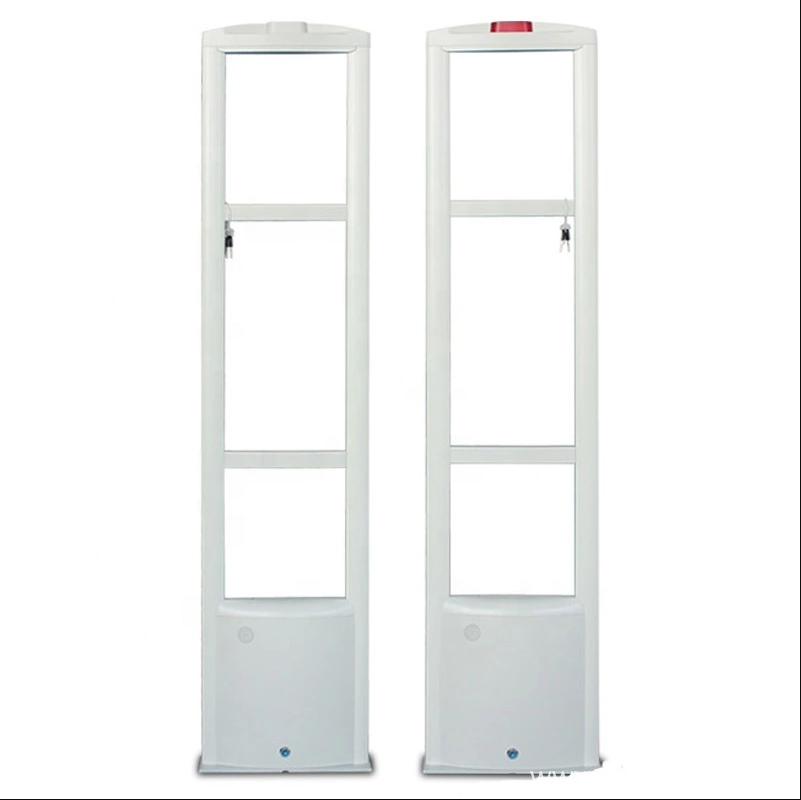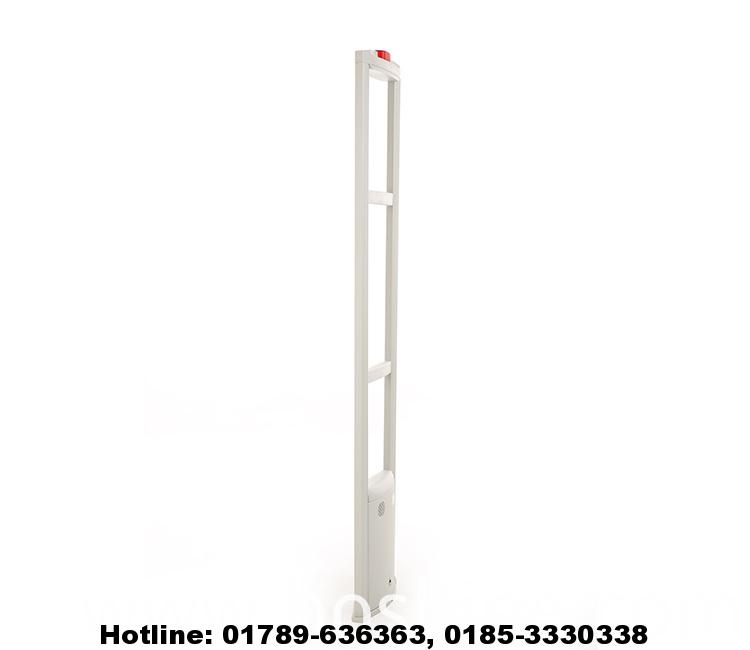Best Security Products Shop in Bangladesh With Best Price
ZKTeco iClock9000-G (GPRS / 3G) Time Attendance Terminal || Hundure RAC-960PEF Fingerprint Time Attendance & Access Controller || Ahuja HBM-60CC Condenser, Cardioid Headband Microphone || Security Mirror || Parking Mirror || ZKTeco uFace800 Plus Face Detection Multi-Biometric T&A and A&C Terminal || Soft Tag (Swing) RF 8.2Mhz For EAS || TOA WM-5325 With WT-5810 UHF Wireless Microphone Sets
Toa YP-E401 Ear-suspension Earphone – Black
- Max input: 50 mW
- Weight: 17 g
- 3.5 mm plug
- 16 Ω impedance
- Dynamic type
Call for PriceToa YP-E401 Ear-suspension Earphone – Black
Call for PriceToa WT-2100 Portable Microphone Receiver
- Power Source: 1.5 V DC
- De-emphasis: 50 μs
- Battery: LR6 (1.5 V)×1
- Temperature:-10 ℃ to+40 ℃
- Weight: 112g
Call for PriceToa WT-2100 Portable Microphone Receiver
Call for PriceToa A-3212DM Digital Mixer Amplifier with MP3 120W
A-3212DM is a high-performance yet cost-effective mixer power amplifier equipped with MP3 and Bluetooth function. Ideal for broadcasting, paging, or background music in schools, offices, shops, houses of worship and large ballrooms.
Call for PriceToa A-3212DM Digital Mixer Amplifier with MP3 120W
Call for PriceToa YR-780-10M Extension cord
The YR-780-10M is an extension cord used to connect between the conference system’s Central unit and conference units (TS-781 and TS-782) .
- To use with TS-780 series
- 8P DIN plug
- 10 m length
Call for PriceToa YR-780-10M Extension cord
Call for PriceToa TS-682L Delegate Unit with Long Microphone
The TS-682L is a Delegate unit of the TOA conference system, TS-680 Series of which compact and lightweight design makes it easy to install and store. Placing the talk key in ON position permits speech and disable the speaker to prevent feedback. If the talk key is placed in the OFF position, the microphone cannot be used but the speaker is turned on, allowing voices from other conference units to be monitored. And the TS-682L Delegate Unit comes with a long microphone as a standard accessory.
Call for PriceToa TS-682L Delegate Unit with Long Microphone
Call for PriceTOA TS-680 Central Unit for Conference System
The TOA TS-680 Central Unit is a great choice for managing conferences in boardrooms, meeting rooms, and other spaces where clear communication and easy setup are crucial. Its reliable performance, flexible configuration options, and compact design make it a versatile solution for smaller to medium-sized conference needs.
Call for PriceTOA TS-680 Central Unit for Conference System
Call for PriceTOA TS-782 Delegate Unit
The TS-782 is a Delegate unit for TOA Conference system, of which compact and lightweight design makes it easy to install and store. Placing the speech button in the ON position permits speech and disables the speaker to prevent feedback. If the speech button is placed in the OFF position, the microphone cannot be used but the speaker is turned on, allowing the voices from other conference units to be monitored. Two types of dedicated microphones are made available for the TS-782 as optional products: the TS-773 standard type and the TS-774 long type.
Call for PriceTOA TS-782 Delegate Unit
Call for PriceTOA TS-781 Chairman Unit
The TS-781 is a Chairman unit for TOA Conference system, of which compact and lightweight design makes it easy to install and store. Placing the speech button in the ON position allows a chairman to speak and disables the speaker to prevent feedback. If the speech button is placed in the OFF position, the microphone cannot be used but the speaker is turned on, allowing the voices from delegate units (TS-782) to be monitored. By pressing the priority button, the chairman unit can take precedence over any delegate units. Two types of dedicated microphones are made available for the TS-781 as optional products: the TS-773 standard type and the TS-774 long type.
Call for PriceTOA TS-781 Chairman Unit
Call for PriceTOA TS-780 Central Unit for Conference System
The TS-780 is a Central unit for TOA Conference system. Use of its line connection terminals permits connections to the conference units of TS-781 and TS-782, making up a conference system. The TS-780 is equipped with a MP3 recorder that permits conference contents to be recorded on a SD card. Up to 3 Central units can be connected. With the use of an optional rack mounting bracket, it can be mounted in an EIA Standard equipment rack (2 unit size).
Call for PriceTOA TS-780 Central Unit for Conference System
Call for PriceTOA TS-690 Central Unit for Wired Conference System
The TS-690 is a Central Unit for TOA Conference System, TS-690 Series. The use of its line connection terminals permits connections to the conference units of TS-691L & TS-692L, making up a complete conference system to meet your needs. With the use of an optional rack mounting bracket, it can be mounted in an EIA Standard equipment rack, occupying 2 unit sizes.
৳ 55,000.00Toa TS-691L Chairman Unit with Long Microphone
The TS-691L is a Chairman unit of the TOA conference system, TS-690 Series of which compact and lightweight design makes it easy to install and store. Placing the speech button in ON position allows a chairman to speak and disable the speaker to prevent feedback. If the speech button is placed in the OFF position, the microphone cannot be used but the speaker is turned on, allowing voices from delegate units (TS-692L) to be monitored. Pressing the priority key on the chairman unit allows chairman to take precedence over any delegate units. And the TS-691L Chairman Unit comes with a long microphone as a standard accessory.
৳ 27,500.00Toa TS-691L Chairman Unit with Long Microphone
৳ 27,500.00Toa TS-692L Delegate Unit with Long Microphone
The TS-692L is a Delegate unit of the TOA conference system, TS-690 Series of which compact and lightweight design makes it easy to install and store. Placing the speech button in ON position permits speech and disable the speaker to prevent feedback. If the speech button is placed in the OFF position, the microphone cannot be used but the speaker is turned on, allowing voices from other conference units to be monitored. And the TS-692L Delegate Unit comes with a long microphone as a standard accessory.
৳ 25,500.00Toa TS-692L Delegate Unit with Long Microphone
৳ 25,500.00
Epowsens
Established in 2005, Epowsens, a leading enterprise focuses on RF/AM soft label, RF/AM hard tag, RFID inlay/label, EAS/RFID system, etc. With over 10 years of experience, hundreds of employees and 1.2 billion pieces of annual production quantity, our products has cover a large share of the worldwide market. Our company’s amount of annual exports is 5-7 millions USD.
The core of our service is responsibility. We keep it as our culture, making our industry protects the retailers in the world.
EAS (Electronic Article Surveillance)–A security system for preventing theft in retail stores that uses disposable RF /AM label or reusable RF/AM hard tags attached to the merchandise. An alarm is triggered when walking through detection antenna gate at the store exit if a disposable tag was not deactivated or a reusable tag was not removed at the checkout counter.

epowsens Bangladesh
UHF Inlay HF Inlay RFID UHF label RFID HF Label RFID Tag
RF Label Hard Tag Bottle Tag Ink Tag Detacher Am Label Deactivtor Eas System Safer Pin Lanyard Alarm Tag

EAS anti-theft alarm security system Price in Bangladesh

Epowsens Retail eas rf alarm antenna anti-theft security systems in Uttara, Dhaka-Bangladesh

Retail eas rf alarm antenna anti-theft security systems in Uttara, Dhaka



How EAS Systems Working?
How Anti-shoplifting Devices Work? How EAS devices can detect security tags and security labels?
The most effective anti-shoplifting tools these days are tag-and-alarm systems, better known as electronic article surveillance (EAS) systems. Separately, these are good options. Used together, experts say, they’re almost unbeatable. EAS is a technology used to identify articles as they pass through a gated area in a store. This identification is used to alert someone that unauthorized removal of items is being attempted. According to the Association of Automated Identification Manufacturers, over 800,000 EAS systems have been installed worldwide, primarily in the retail arena. EAS systems are useful anywhere there is an opportunity for theft of items of any size. Using an EAS system enables the retailer to display popular items on the floor, where they can be seen, rather than putting them in locked cases or behind the counter.
New EAS technologies are being produced — not only to reduce shoplifting — but also to help increase sales, lower labor costs, speed inventory, improve stockroom logistics and, one day, to replace inventory record-keeping. But for now, we’ll stick to the role of EAS in battling shoplifting in your imaginary store!
Three types of EAS systems dominate the retail industry. In each case, an EAS tag or label is attached to an item. The tag is then deactivated, or taken from an active state where it will alarm an EAS system to an inactive state where it will not flag the alarm. If the tag is a hard, reusable tag, a detacher is used to remove it when a customer purchases the item it’s attached to. If it’s a disposable, paper tag, it can be deactivated by swiping it over a pad or with a handheld scanner that “tells” the tag it’s been authorized to leave the store. If the item has not been deactivated or detached by the clerk, when it is carried through the gates, an alarm will sound.
The use of EAS systems does not completely eliminate shoplifting. However, experts say, theft can be reduced by 60 percent or more when a reliable system is used. Even when a shoplifter manages to leave the store with a tagged item, the tag still must be removed — something that is no longer as easy as it once was. For example, some EAS tags contain special ink capsules, which will damage the stolen item when forcibly, and illegally, removed. (This type of device is known in the industry as benefit denial — we’ll discuss it more later!). Other popular EAS components today include source tagging, whereby an inexpensive label is integrated into the product or its packaging by the manufacturer.
The type of EAS system dictates how wide the exit/entrance aisle may be, and the physics of a particular EAS tag and technology determines which frequency range is used to create a surveillance area. EAS systems range from very low frequencies through the radio frequency range (see How Radio Scanners Work). These EAS systems operate on different principles, are not compatible and have specific benefits and disadvantages. (That’s why the Consumer Products Manufacturers Association, Inc. is encouraging a “tower-centric” EAS approach that can “read” multiple tag technologies rather than the “tag-centric” models that exist today.












